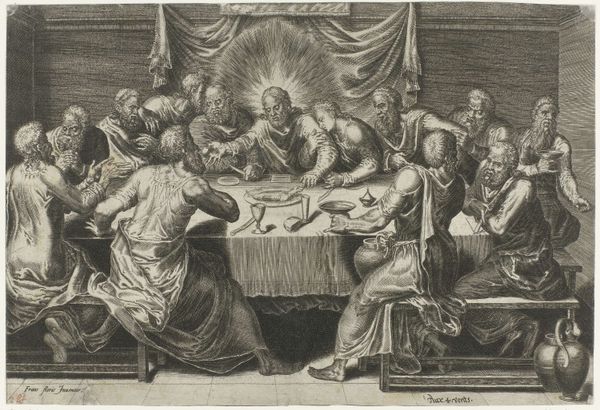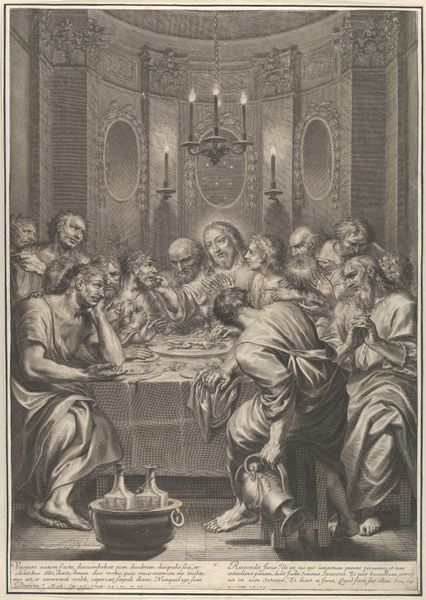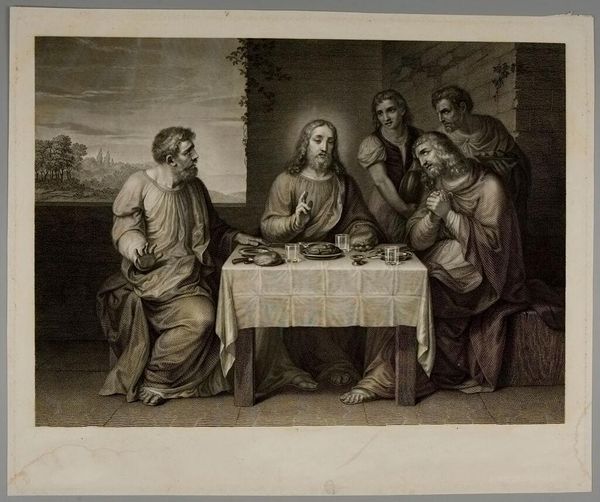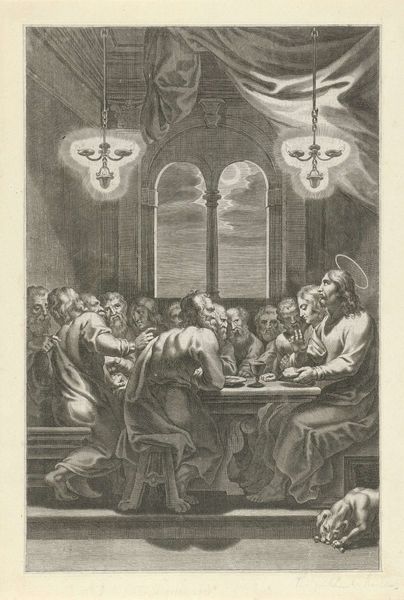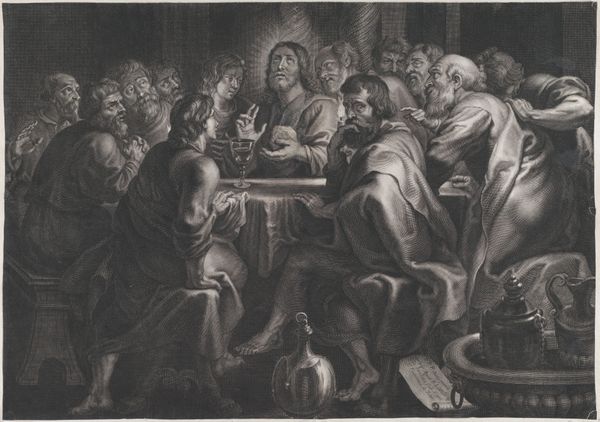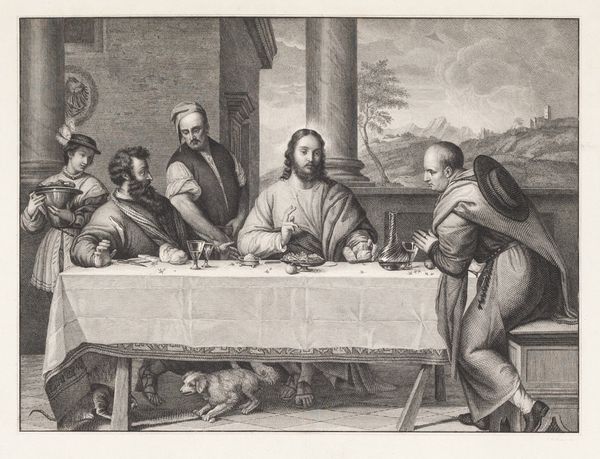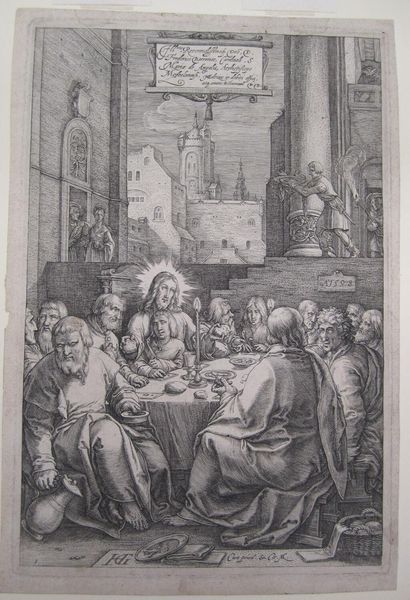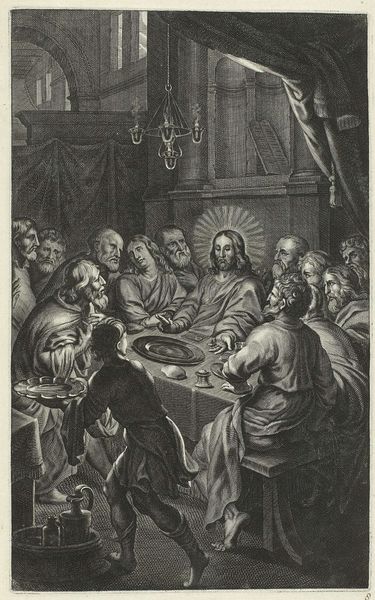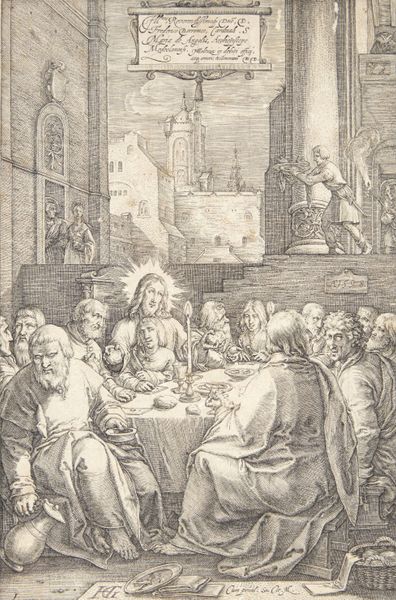
Fotoreproductie van een schilderij door Juan de Juanes, voorstellend het Laatste Avondmaal c. 1860 - 1875
0:00
0:00
print, photography, gelatin-silver-print
# print
#
archive photography
#
photography
#
historical photography
#
gelatin-silver-print
#
19th century
#
genre-painting
#
history-painting
#
academic-art
#
realism
Dimensions: height 191 mm, width 298 mm
Copyright: Rijks Museum: Open Domain
Curator: Before us, we have a gelatin-silver print dating from around 1860 to 1875. The work reproduces a painting of The Last Supper originally by Juan de Juanes. Editor: Oh, wow, okay. It's... stark, almost unsettling, in this monochrome rendition. Everyone’s kind of crammed together at the table, with this almost desperate look on their faces. It’s like a snapshot of contained chaos right before… something big. Curator: The choice to photograph a religious history painting during this era is interesting. Photography provided a new way to disseminate imagery. Reproducing works like Juanes’ "Last Supper" democratized access to canonical art, bringing these historically elite visual experiences to broader audiences. Editor: Democratizing art via photo... I get that. Still, though, look at the faces—especially the one guy whispering urgently to Jesus! They all seem to *know*. It's heavier than your average dinner party, know what I mean? There's such gravity, even translated through a photo of a painting. Curator: Indeed. These reproductions often circulated as educational tools, reinforcing the values and stories depicted. The academic style seen in Juanes’ original is echoed in the very meticulous composition that highlights a historical and sacred scene. Editor: Seeing the old masters through this kind of antiquated photography filter… gives it this whole 'found footage' vibe, almost. Like glimpsing an actual, pivotal historical event caught on a very grainy camera roll. Adds a weird kind of weight. Curator: Precisely. Photography, in this context, is acting as a cultural artifact, recontextualizing older painting within a newer, industrial age of mechanical reproduction and shifting values. Editor: It’s fascinating, really. A copy of a painting of a religious event… processed through technology from over a century ago. Each step removes us further from the source, but paradoxically, creates an entirely unique aesthetic and, for me, adds new layers of meaning. Curator: Yes, the print’s power lies in that layering, how it documents not just a scene, but its own changing significance through time and technology. Editor: Couldn’t have said it better myself. An echo of an echo…still managing to whisper volumes.
Comments
No comments
Be the first to comment and join the conversation on the ultimate creative platform.
